
For SpaceUpClose.com & RocketSTEM
CAPE CANAVERAL SPACE FORCE STATION, FL – SpaceX successfully delivered South Korea’s first dedicated military satellite dubbed Anasis-II to orbit Monday afternoon aboard a historic recycled Falcon 9 rocket – and then landed the 1st stage booster and captured both payload fairings thereby concluding a totally successful mission on a picture perfect day on the Florida Space Coast.
The South Korean Anasis 2 military communications satellite launched aboard a flight-proven SpaceX Falcon 9 rocket at 5:30 p.m. EDT (2130 GMT) Monday, July 20 from Space Launch Complex 40 (SLC-40) at Cape Canaveral Space Force Station in Florida.
This was the second launch for this particular Falcon 9 first stage booster after having flown once previously on the history making flight that successfully launched the Demo-2 crew of two NASA astronauts Bob Behnken and Doug Hurley to the International Space Station (ISS) on May 30 from Florida.
The launch of the Anasis-II national security military communications satellite to geostationary orbit for South Korea will enable its use to help with defense needs on the Korean peninsula and the ever present threats from North Korea under the leadership of Kim Jong Un.
The satellite was built by Airbus as part of an offset package between Lockheed Martin and the South Korean government as an exchange for the purchase of 40 F-35 combat aircraft jets back in 2014.
Liftoff Monday afternoon of the 229-foot-tall (70-meter) launcher finally came after another 30 minute weather delay -following multiple earlier delays including both technical issues and weather that enabled SpaceX to at last resume launches of their workhorse Falcon 9 booster
“Falcon 9 launches ANASIS-II to orbit – the second flight for this booster, which launched @AstroBehnken and @Astro_Doug to the @Space_Station in May. More photos → flickr.com/spacex” SpaceX tweeted.
Falcon 9 launches ANASIS-II to orbit – the second flight for this booster, which launched @AstroBehnken and @Astro_Doug to the @Space_Station in May. More photos → https://t.co/095WHWMtKp pic.twitter.com/gHQbH22Uja
— SpaceX (@SpaceX) July 21, 2020
Enjoy our Space UpClose photos of the launch and prelaunch opportunities onsite from the team of Ken Kremer and Jean Wright.
Furthermore its very noteworthy is that this recycled Falcon booster featured a record turnaround launch period of just 51 days from its last launch on Demo-2.
The previous record turnaround time between launches of the same Falcon 9 booster was 62 days accomplished by SpaceX achieved with a mission lifting off Feb. 17.
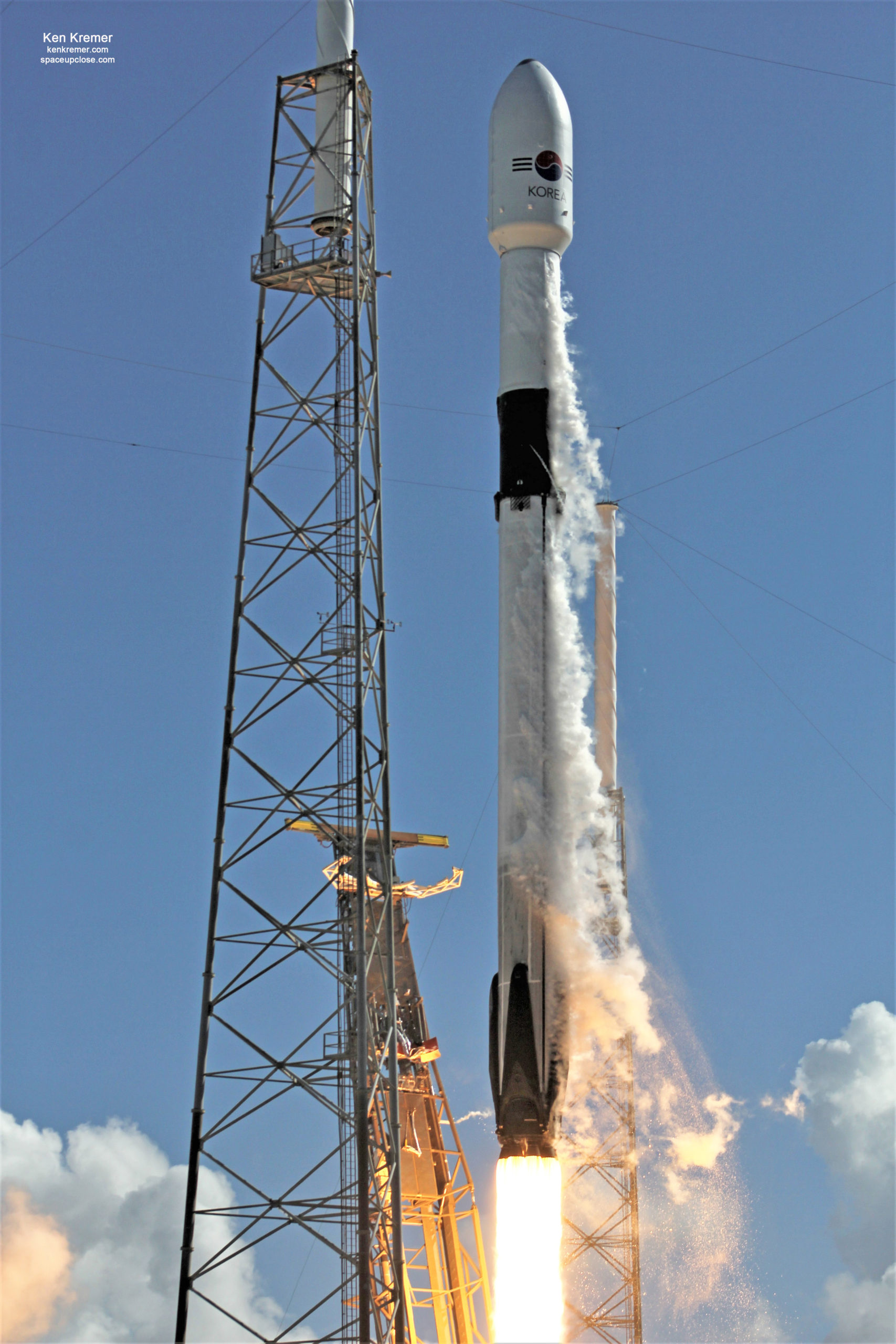
The nine Merlin-1D first stage engines roared to life with 1.7 million pounds of liftoff thrust propelling the launcher off pad 40.
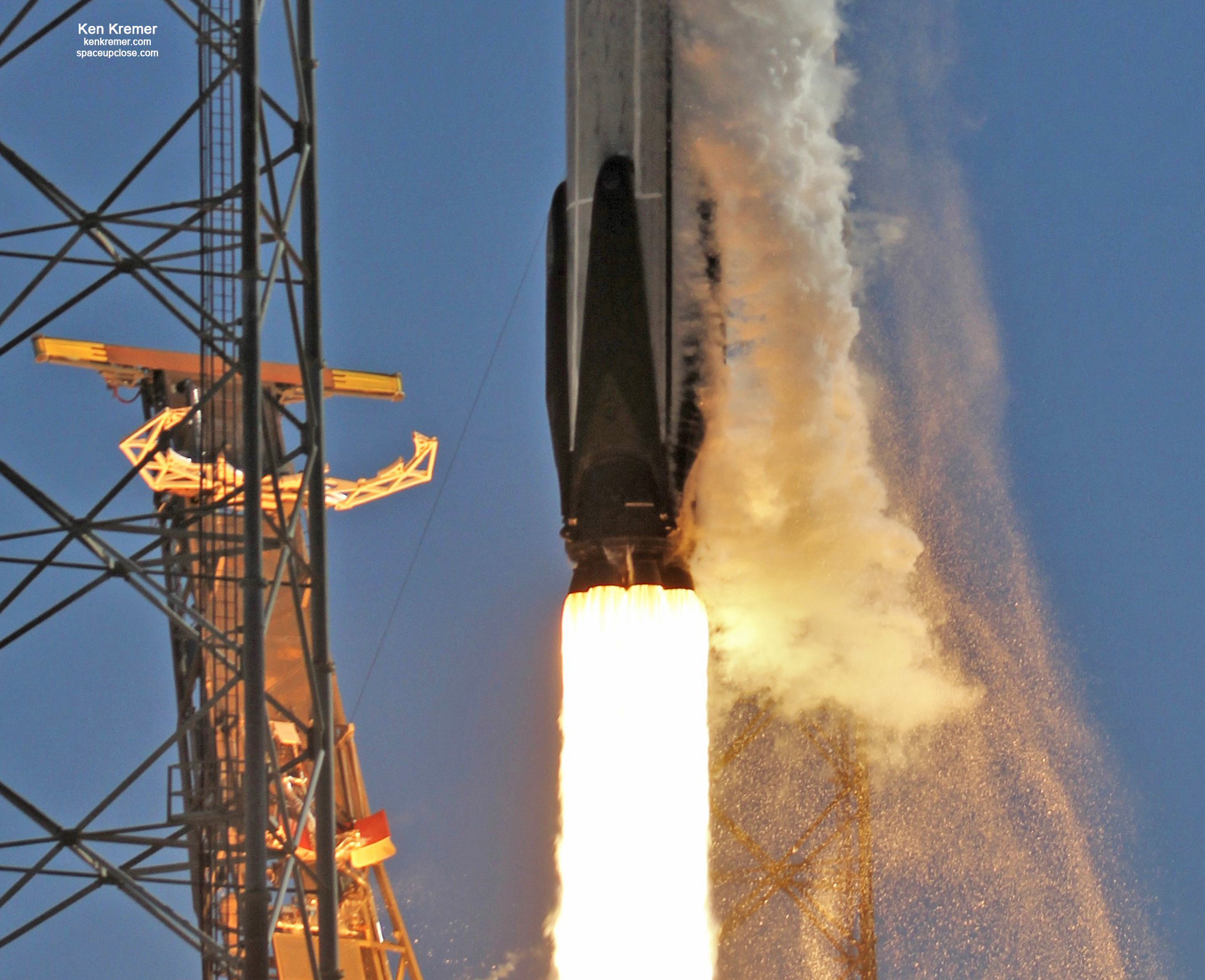
It soon arched over eastwards over the Atlantic Ocean and exceeded the speed of sound within about one minute after liftoff.
Following stage separation, SpaceX then successfully landed Falcon 9’s first stage on the “Just Read the Instructions” (JRTI) droneship about eight and a half minutes after launch.
JRTI was stationed about 400 miles (640 km) downrange in the Atlantic Ocean off the Carolina’s coast.
Watch this landing video from SpaceX:
“Falcon 9’s first stage has landed on the Just Read the Instructions droneship,” SpaceX tweeted.
Falcon 9’s first stage has landed on the Just Read the Instructions droneship pic.twitter.com/fPbckYFySh
— SpaceX (@SpaceX) July 20, 2020
Although the launch was carried live the broadcast ended after the the 1st stage landing on JRTI
“Per the customer’s request, live coverage will end shortly after first stage landing,’ said SpaceX .
The upper stage then fired to boost the satellite to its intended orbit.
The ANASIS-II spacecraft was deployed as planned about 32 minutes after liftoff.
Deployment of ANASIS-II confirmed
— SpaceX (@SpaceX) July 20, 2020
ANASIS-II is a secure communications satellite built by prime contractor Airbus in Toulouse, France for the South Korean military.
“Built for South Korea, ANASIS-II will provide secured communications over wide coverage,” said Airbus.
Based on the highly reliable Eurostar platform, ANASIS-II will be the 52th Eurostar E3000 satellite launched and will operate in geostationary orbit.
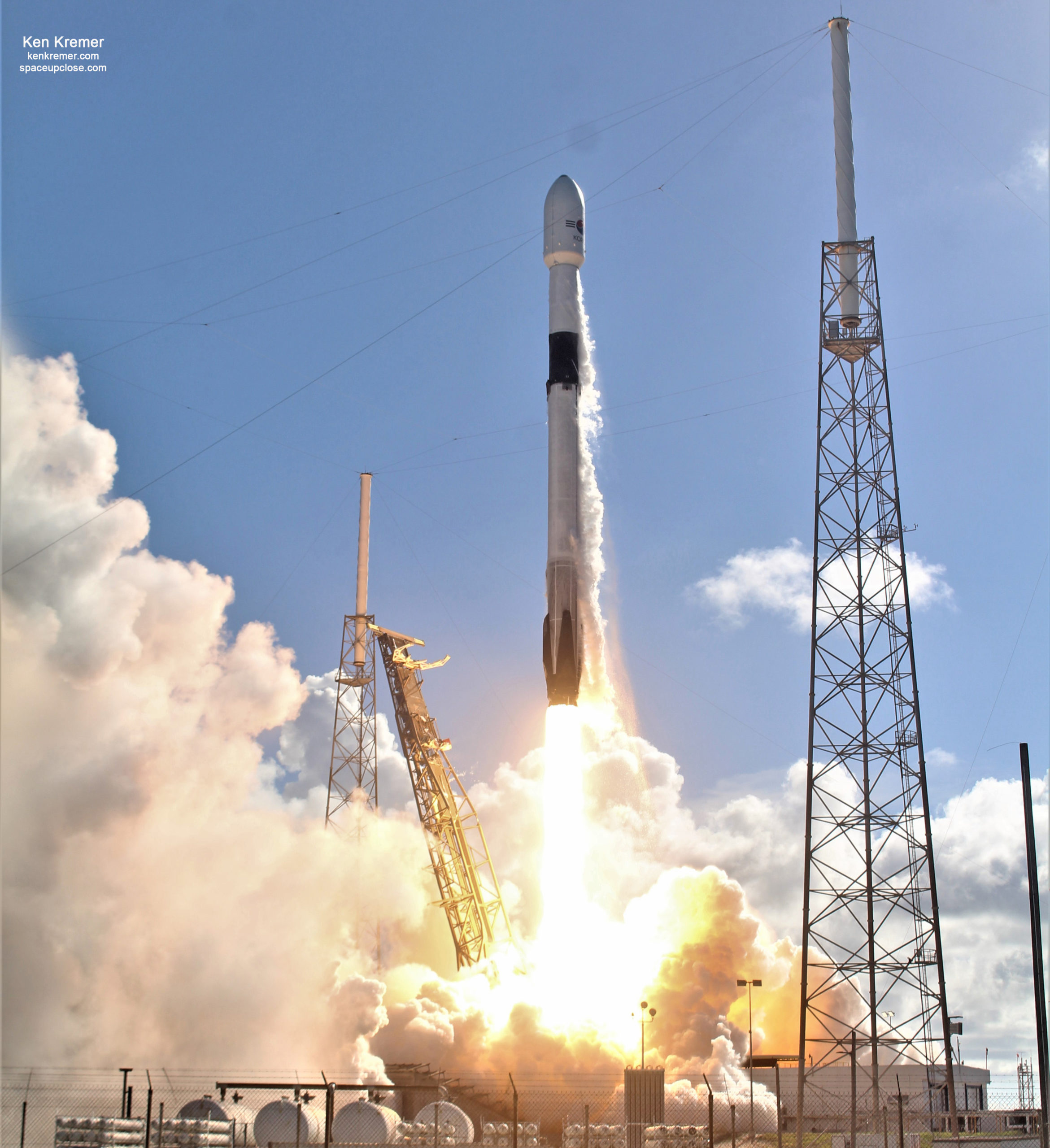
Details about Anasis-II are sparse
The name ANASIS-II is derived from Army Navy Air Force Satellite Information System-II.
It was formerly called “KMilSatCom 1.”

The satellite was built by Airbus as part of an offset package between Lockheed Martin and the South Korean government as an exchange for the purchase of 40 F-35 combat aircraft jets back in 2014.

“Lockheed Martin is honored to deliver on the promise and commitment made to the Republic of Korea government with the successful launch of the Anasis 2 satellite,” Lockheed Martin said in a statement. “This launch and the expected in-orbit handover later this year are the first milestones signifying the completion of an offset project related to the sale of F-35s to the ROKG (Republic of Korea Government) in 2014.”
SpaceX also accomplished another remarkable feat – when for the first time ever both of the payload fairing halves from one mission were caught mid-air descending mid-air under parachutes by SpaceX fleet of two fairing catcher ships GO MsTree and GO MsChief.
Both fairing halves caught from space by @SpaceX ships!
— Elon Musk (@elonmusk) July 20, 2020
They had been deployed from Port Canaveral.
Watch these fairing catch videos of both nose cone halves from SpaceX
Videos of yesterday’s catch of both fairing halves pic.twitter.com/yzTDFzlulL
— SpaceX (@SpaceX) July 21, 2020
Previously SpaceX had only been able to catch one fairing on three different occasions.
Watch this liftoff video from SpaceX
Liftoff! pic.twitter.com/Tn1kU6LtkB
— SpaceX (@SpaceX) July 20, 2020
It was built by Airbus as part of an offset package into the purchase of 40 F-35 combat aircraft
My commentary about the Anasis-II mission was featured on WESH 2 NBC TV News Orlando on July 20 and 21 along with my prelaunch photos as well as WFTV ABC TV News Orlando on July 20 and 21

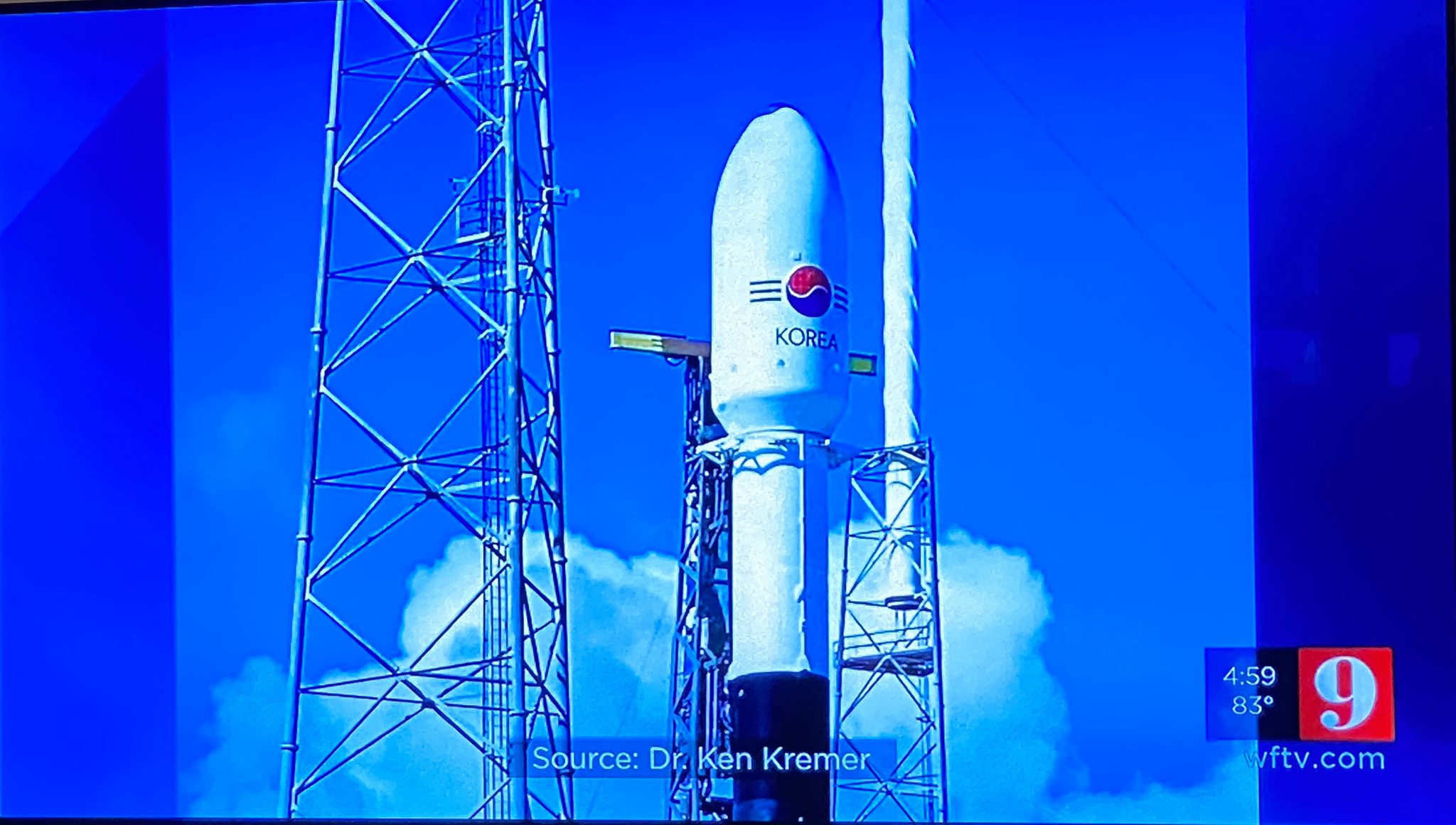
My launch and prelaunch photos were featured at Spaceflight Now
A SpaceX Falcon 9 rocket launched South Korea’s first dedicated military satellite Monday, helping fulfill an agreement between Lockheed Martin & the South Korean government in exchange for Korea’s purchase of F-35 fighter jets (📷: @ken_kremer).
STORY: https://t.co/NoacvRBfXh pic.twitter.com/GWSX22mvA9
— Spaceflight Now (@SpaceflightNow) July 21, 2020
Today’s Falcon 9 launch window at Cape Canaveral opens in two hours.
SpaceX will soon complete final preparations for fueling of the Falcon 9 rocket on pad 40.
The rocket is set to launch with South Korea’s Anasis 2 military satellite (📷: @ken_kremer). https://t.co/1vfSxib8EF pic.twitter.com/jCVaIQj5WM
— Spaceflight Now (@SpaceflightNow) July 20, 2020
Watch Ken’s continuing reports about Commercial Crew and Artemis and more onsite for live reporting of upcoming and recent SpaceX and ULA launches including Demo-2, Starlink, X-37B, Solar Orbiter, Mars 2020 and more at the Kennedy Space Center and Cape Canaveral Space Force Station.
Stay tuned here for Ken’s continuing Earth and Planetary science and human spaceflight news: www.kenkremer.com –www.spaceupclose.com – twitter @ken_kremer – email: ken at kenkremer.com
Dr. Kremer is a research scientist and journalist based in the KSC area, active in outreach and interviewed regularly on TV and radio about space topics.
………….
Ken’s photos are for sale and he is available for lectures and outreach events
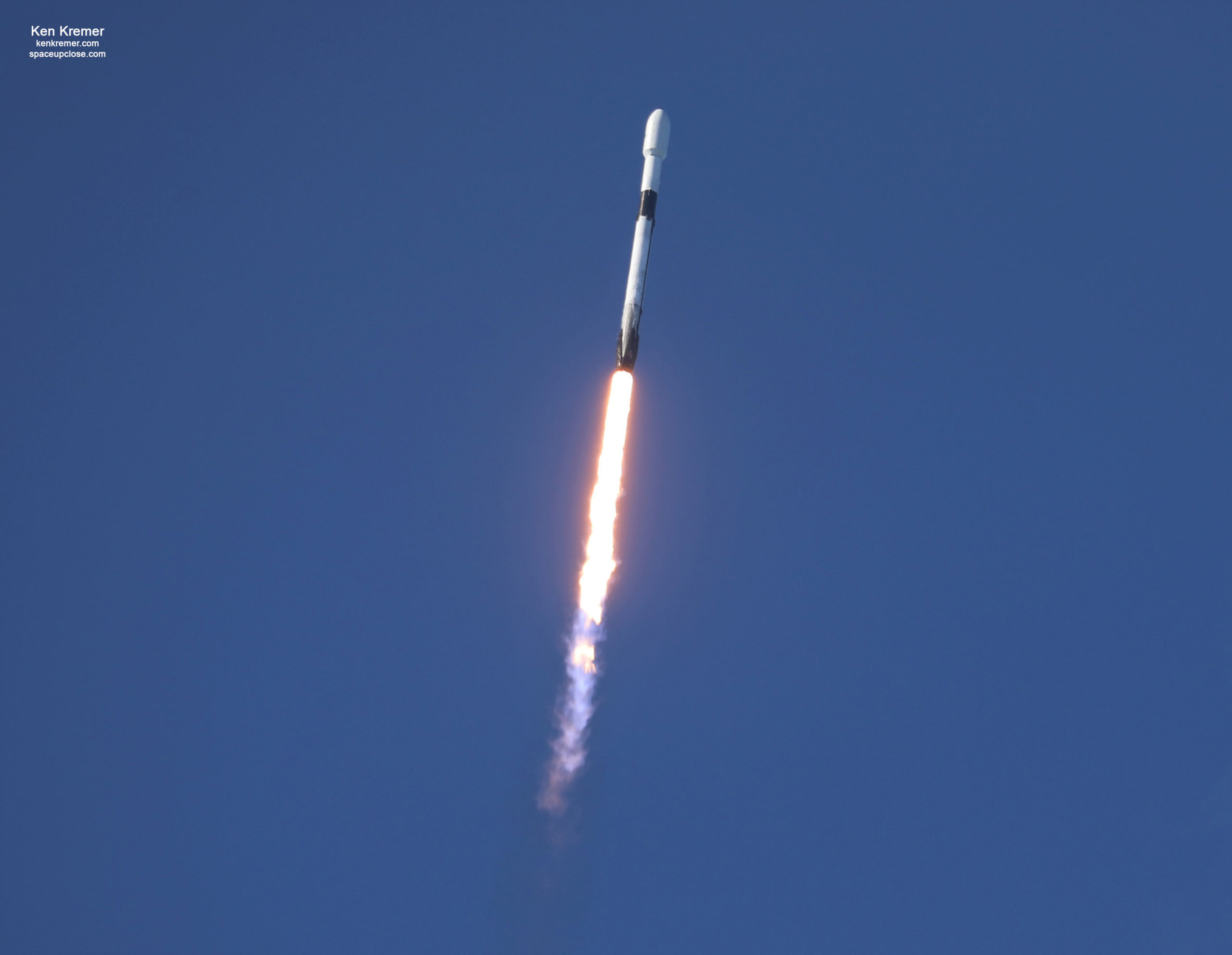

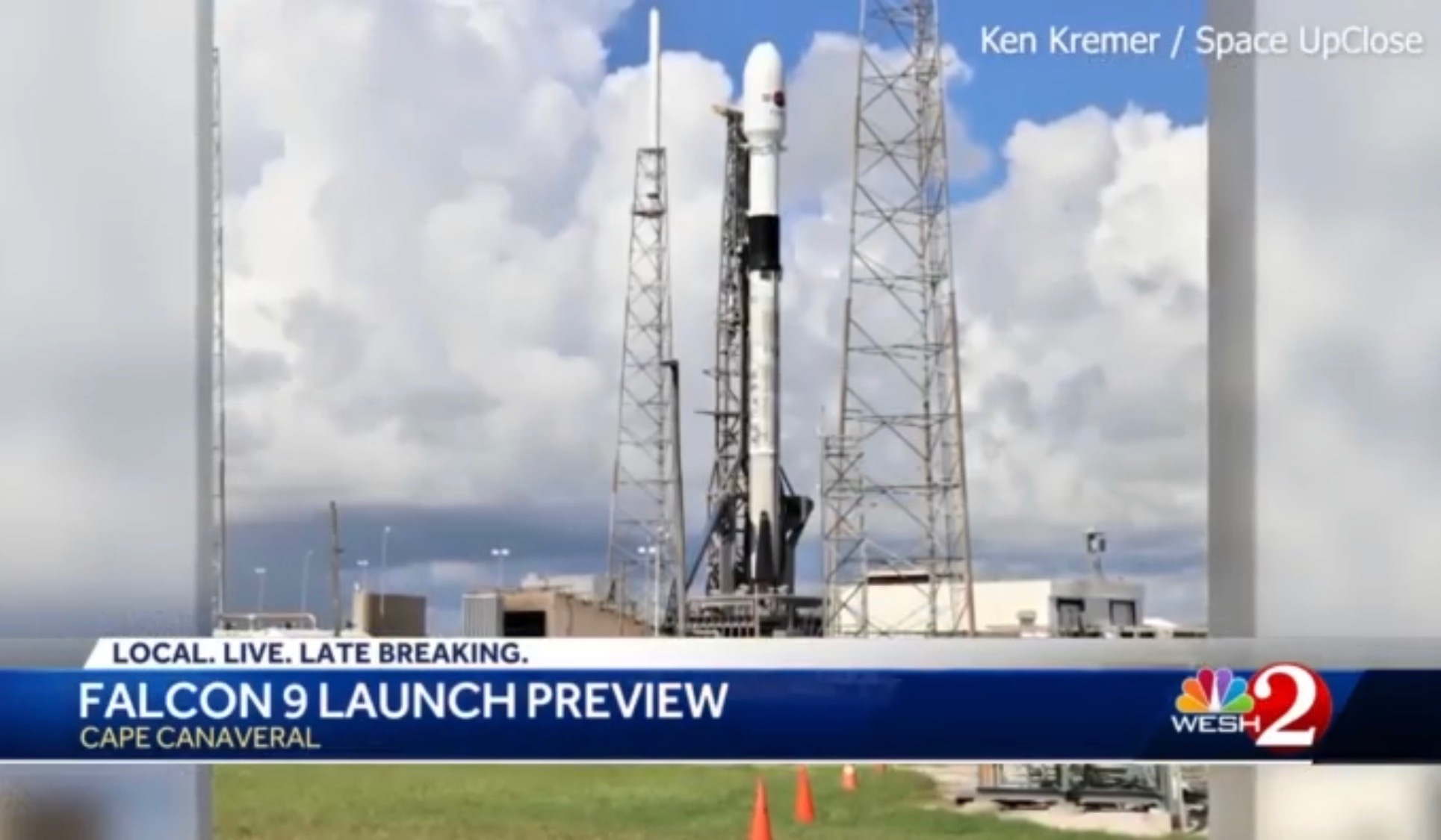

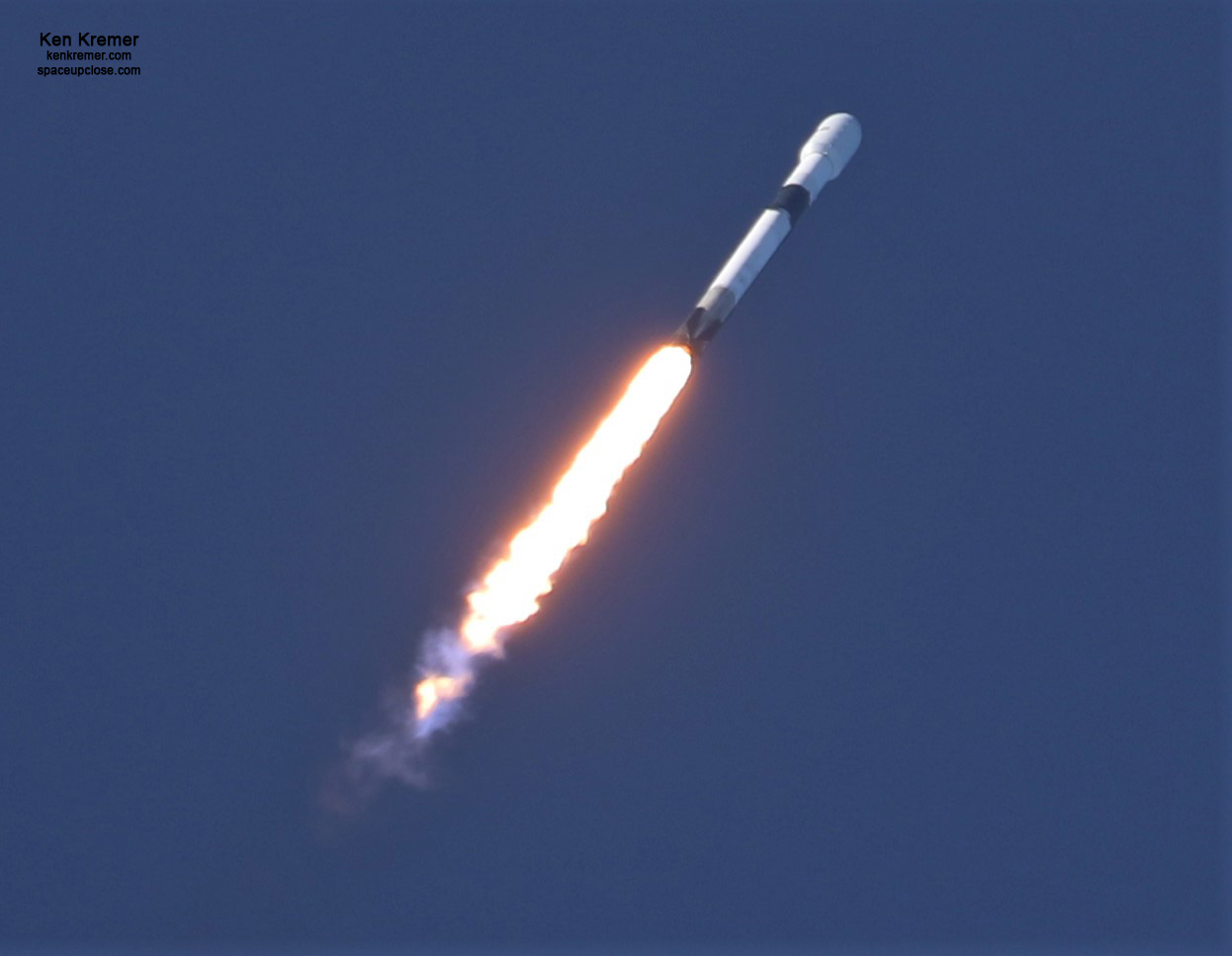
x



